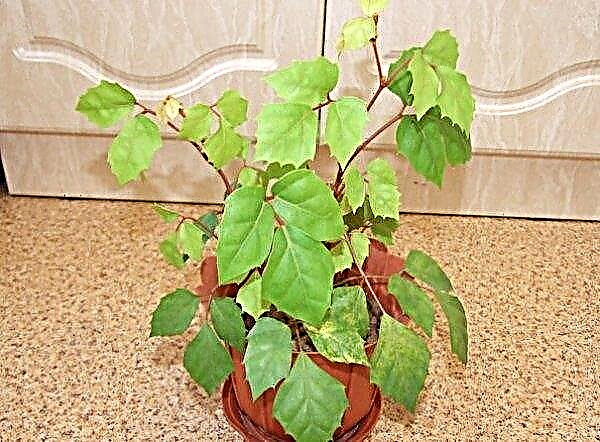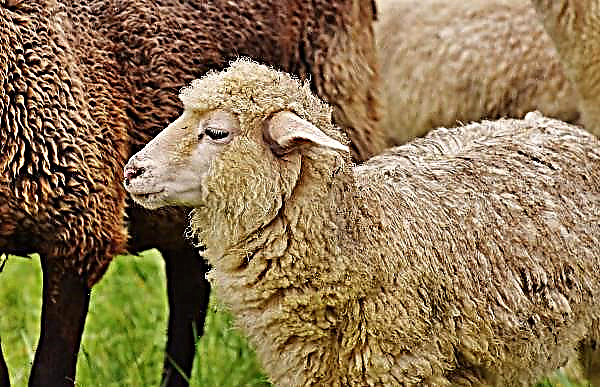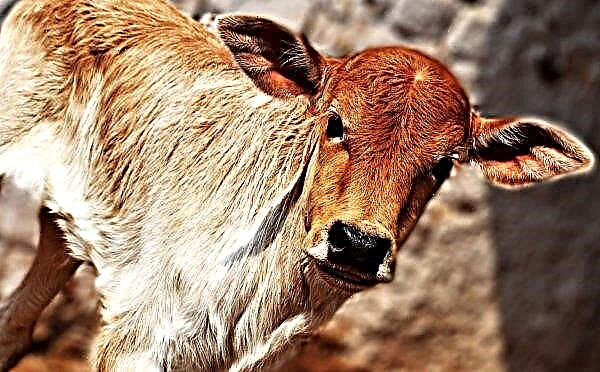Diarrhea in chickens is a fairly common occurrence. However, you can not leave it unattended. What causes diarrhea and what methods to treat it, we will tell in this article.
Possible causes and symptoms of diarrhea in chickens
There can be many reasons for the development of diarrhea in chickens - from banal poisoning or inadequate feed quality to serious infectious diseases. We will look at the most common causes and additional symptoms that accompany diarrhea. After all, a clear understanding of what led to a breakdown in the digestive system will allow for proper treatment and preservation of livestock.
Infections
Diarrhea, which began due to the presence of a viral or bacterial infection in the body, is the most serious because it can lead to a massive mortality of birds. It requires compulsory treatment. Diarrhea in chickens indicates a violation of digestion or infection. It is possible to understand that chickens are vilified due to infection by the color of droppings and other symptoms that accompany the course of the disease:
Diarrhea in chickens indicates a violation of digestion or infection. It is possible to understand that chickens are vilified due to infection by the color of droppings and other symptoms that accompany the course of the disease:
- weakness, depression;
- impaired coordination of movements;
- exhaustion, rapid weight loss;
- refusal of food;
- increased thirst;
- decrease in egg production;
- ruffled and scruffy feathers;
- impurities of blood and black coating in the litter and on the eggshell.
Important! Treatment of diarrhea with an infectious etiology should be carried out only by a veterinarian. Self-medication of poultry can lead to a worsening of the situation and the transition of the disease to an advanced stage.
Microflora
Bacterial imbalance in the intestine can occur due to a decrease in immunity, an unbalanced diet, poisoning or taking antibiotics. With the right actions of the bird owner, adjusting the feed and introducing probiotics, this problem can be quickly eliminated.
Wrong diet and poisoning
These are the most common reasons diarrhea can occur. It happens through the fault of the owner, who neglects the compilation of the diet of poultry and does not control the quality of the feed that enters the feeders. To poisoning can lead to:
To poisoning can lead to:
- feeding chickens with food that has expired or which was stored in the wrong conditions, as a result of which fungi, mold, and harmful microorganisms developed in it;
- the use of laying hens with pasture poisonous herbs or seeds;
- eating too much grass;
- watering birds with dirty water;
- providing home birds and feeders made from low-quality materials containing harmful substances.
Did you know? Competitions are held in the world, during which a record is set for high-speed eating of chicken eggs. To date, the record holder is John Kenmuir, who ate 14 eggs in 14 minutes and 42 seconds.
Long transportation
Chickens are shy birds that experience stress when changing living conditions, prolonged transport, or keeping them in poor conditions. Diarrhea, which occurs for this reason, is usually of a normal color and does not require treatment. After the chickens are placed in a calm environment and adapt to new conditions, the work of the digestive tract will improve on its own.
Hypothermia
The recommended temperature in the chicken coop in winter is +12 ... + 15 degrees. Lowering it to lower values is fraught with a decrease or complete disappearance of egg production, as well as the development of problems with the intestines. Most often, diarrhea develops in chickens due to exposure to low temperatures. For them, it is especially dangerous, because it can lead to clogging of the cloaca, intoxication of the body, dehydration, and even death.
Determining the cause by type of litter
As already mentioned, almost always the etiology of diarrhea can be determined by the color of the stool.
White droppings are characteristic when:
- deficiency in the body of vitamins and minerals;
- the presence of a viral or bacterial infection, more often salmonellosis, pullorosis;
- the presence of worms.
- the abundance of green herbs in the diet;
- the effects of stress;
- the use of poor-quality feed;
- poisoning by seeds;
- the development of colds.
 Blood diarrhea indicates an infectious disease. The development of an infectious disease can be suspected in case of oppression of the bird, refusal to eat, increased thirst. A yellow or brown litter indicates that the chicken has contracted an infectious disease or a cold. Treatment of an infected individual should be started as soon as possible.
Blood diarrhea indicates an infectious disease. The development of an infectious disease can be suspected in case of oppression of the bird, refusal to eat, increased thirst. A yellow or brown litter indicates that the chicken has contracted an infectious disease or a cold. Treatment of an infected individual should be started as soon as possible.
Short yellow diarrhea can occur with a sharp change in feed, improper feeding or stress.
Blood-diarrhea indicates to the breeder that the bird has a dangerous infectious disease and immediate veterinarian consultation is required. It may also be evidence of trauma to the cloaca. Black feces can accompany abnormalities in the digestive tract.
Did you know? Chickens are able to lay eggs only under lighting. Even if the time for the exit of the egg from the oviduct has already come and fell at night, the chicken will delay the process for daylight or wait for the light to turn on.
How and how to treat diarrhea in chickens
In order to successfully cure diarrhea in chickens, it is necessary to establish the cause. Sometimes, in order to get rid of it, it is enough to eliminate the factors that led to the gastrointestinal upset.
What to do first
If the chicken has only diarrhea, without an unpleasant odor, blood, mucus and foam and there are no other symptoms of the disease, then first of all, it is necessary to analyze what she used recently, whether she had stressful situations in her life, whether she had good living conditions if there are any harmful herbs and seeds on the walking platform. After that, the reason should be eliminated - to raise the temperature in the chicken coop, remove the source of stress, correctly adjust the diet, introduce mineral supplements, do not let the grass out for some time, etc. If the cause was established correctly, then the digestive system will work out after a while. In case of poisoning, it will be necessary to transfer the bird to a sparing diet and drink it with oat or rice broth, as well as drink it with a sorbent - activated charcoal, wood ash.
In case of poisoning, it will be necessary to transfer the bird to a sparing diet and drink it with oat or rice broth, as well as drink it with a sorbent - activated charcoal, wood ash.
If the reason cannot be established, then the following steps must be performed:
- Move the swearing bird to a well-ventilated, bright room.
- Disinfect a room with a slaked lime stock.
- Process feeders and drinking bowls with boiled water.
- Drink the feathered solution of activated carbon, wood ash, potassium permanganate, chamomile broth.
- Replace the food with decoctions of rice or oatmeal.
- Introduce drugs Levomycetin, Biseptol.
- Such treatment should be carried out for 2-3 days.
- In the future, introduce probiotics Emprobio, Flosan with food.
Drug treatment
With non-infectious diarrhea, chickens are prescribed the following drugs:
- Biseptol - 1/8 tablet three times a day for 5-6 days (for a chicken, the dose should be 2 times less);
- Chloramphenicol - 5 tablets per 0.5 l of water, drink 5 times a day for 2-3 days (for a chicken, the dose is 2 times less, the frequency is 2-3 times a day).
 To restore the intestinal microflora, apply Kolibacterin, Lactobacterin, Acylact, Monosporin. The dose is calculated according to the instructions. Some infections that cause diarrhea are not economically feasible to treat, so most often sick chickens are rejected and killed.
To restore the intestinal microflora, apply Kolibacterin, Lactobacterin, Acylact, Monosporin. The dose is calculated according to the instructions. Some infections that cause diarrhea are not economically feasible to treat, so most often sick chickens are rejected and killed.
If there are suspicions of the presence of helminths, then it is necessary to carry out treatment for worms:Important! Eating eggs and chicken meat sick with an infectious disease is strictly prohibited.
- Avatecom - 500 g / 1 t of feed, 7 days;
- Levamisole - 2.5 ml intramuscularly for 3 days or 2.5 ml / 1 liter of water in a drinker;
- other drugs (Filiksan, Pirantelom, Piperazinom) depending on the type of parasites.
Treatment with folk remedies
From folk remedies for the treatment of diarrhea are used:
- Weak solution of potassium permanganate - 5 g / 1 l of water, add to the drinker instead of water for 2-3 days.
- Gruel.
- Clay talker - Dissolve a small amount of white clay in water.
- Oat broth - Mix 1 cup with 1 liter of water, cook until ¾ of the liquid remains. An oat broth with the addition of 5-10 drops of red wine is also considered an effective remedy.
- Rice broth - Mix 1 cup with 1 liter of water, cook for 3-4 minutes.
- Pomegranate infusion - Place 10-12 g of dry pomegranate peels in 200 ml of boiling water, close the container with a lid, leave for 25-30 minutes.
- Chamomile decoction - 4 tablespoons of chamomile flowers pour 0.5 liters of boiling water, put in a water bath for 30 minutes, insist for half an hour.
 With diarrhea, several crystals of manganese are added to the water in chickens. These agents have an astringent, antibacterial, antimicrobial effect.
With diarrhea, several crystals of manganese are added to the water in chickens. These agents have an astringent, antibacterial, antimicrobial effect.
Disease prevention
In order to prevent diarrhea in poultry, it is necessary to carry out such preventive measures:
- Make a balanced diet with vitamins and minerals necessary at different times of the year. The menu should include greens, vegetables, premixes, wet mixes, chalk, gravel.
- New types of feed must be introduced gradually.
- Feed the chickens with quality fresh feed.
- Change the drinking water daily.
- Do not let go hungry for a walk.
- Observe sanitary standards.
- Regularly clean and disinfect the house, feeders, and drinkers.
- Periodically inspect livestock for health conditions.
- Add Terramycin, Furazolidone, Furagin to the diet (according to the scheme: 14 days, interval 3 days, 14 days).
- To increase the body's defenses, mix Katozal, Vitaminol, Chiktonik, a complex preparation into food or water.
- Twice a year to carry out deworming.
- Chickens that have just been acquired must be quarantined for 14 days.

Extra Care Tips
In order for chickens to get sick as little as possible, it is necessary:
- Pour and replace bedding regularly. It should be clean and dry.
- Install high-quality ventilation in the house, which will remove excess moisture and maintain proper humidity.
- Set heating in the chicken coop for winter time.
- Make sure that the drafts are not walking in the room where the hens are kept.
- Daily let the birds out for a walk.
- It is advisable to install nipple drinkers in the chicken coop.
- Adhere to the rate of settlement of the chicken coop in 3-4 individuals per 1 square. m at floor keeping and up to 10 individuals per 1 sq. m. m with cell.












